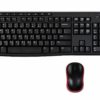With over 250 systems to choose from, evaluating and selecting new ERP systems can be a daunting task.
The good news is that Panorama Consulting Solutions (www.panorama-consulting.com) has compiled a top 10 list of ERP vendors in the market. This top 10 list is based on market share, average implementation cost, average implementation time, average functionality ratings from clients, and average payback / return on investment. These metrics were gathered through independent research and reflect actual results from hundreds of organizations that have recently implemented those solutions.Here is a sneak peak of the top 10 rankings. These are listed in no particular order, although the report, when published, will show how these 10 systems compare to one another:
- SAP HANA
- Oracle Cloud
- Microsoft Dynamics 365 ERP
- Infor CloudSuite
- Epicor
- IFS
- Odoo
- NetSuite
- Sage
- What is the 10th one? (see Jennifer, since we eliminated IBM)
As mentioned above, there are a few weighted criteria that separate these systems from one another in the annual ranking report:
ERP system market share. We evaluate how many companies in our sample of 200+ participants selected and purchased each of the systems. We assign a market share percentage based on the frequency of one system being selected over another. This has the lowest weighting in our study in terms of how systems compare to one another, although it is the most important factor in determining which vendors make the top 10 list in the first place.
Average implementation cost. We assess the total cost of ownership for each system in the top 10. We normalize these costs to account for the fact that larger organizations are more likely to implement certain systems, resulting in a higher average implementation cost for those systems. For example, larger companies implementing Oracle Cloud won’t skew the data to make that system less appealing compared to smaller companies implementing NetSuite.
Average time to implement. We also look at how long the average organization takes to implement each of the above systems. Since some systems are more commonly used by larger organizations compared to smaller organizations, we weighted these scores to normalize for company size. For example, SAP HANA is not penalized simply because it’s Fortune 1000 companies take longer to implement than the smaller organizations implementing a Sage product.
Average Panorama client functional scores. Each year, we conduct dozens of software evaluations for dozens of ERP systems for dozens of clients throughout the world. We capture functional ratings of each of those systems in our ERP vendor database and use these functional scores to compare each system to one another.
Average benefits realized and return on investment. Finally, we quantify the average business benefits that vendor customers say they realize. We look at how long the average company realizes the benefits they expected.






